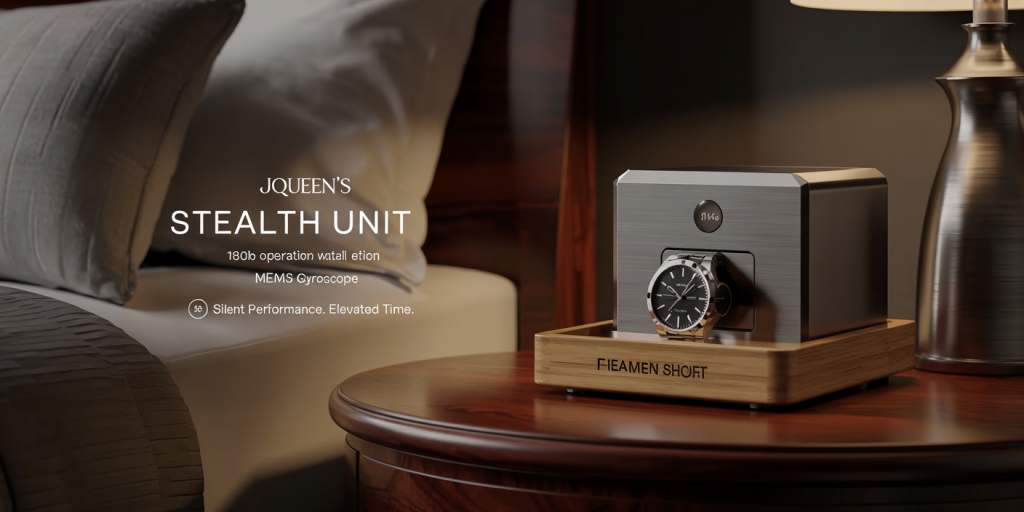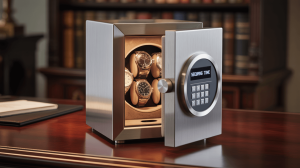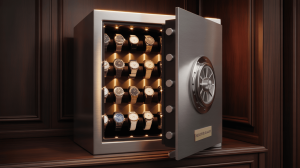Are Watch Winders Really Necessary?
Horological circles remain fiercely divided. Some view these devices as essential caretakers of precision engineering, while others deem them unnecessary risks for delicate movements. The reality? A $15,000 perpetual calendar might demand constant motion, whereas a 1960s chronograph could suffer irreversible damage from the same treatment.
Modern units feature advanced torque calibration and near-silent operation, but debates rage about their impact on lubricant dispersion. Traditionalists point to worn rotor bearings in vintage pieces, while tech advocates highlight $2,500 service bills from neglected complications. The core issue transcends simple necessity—it’s about understanding your timepiece’s mechanical personality. From the physics of mainspring elasticity to the controversial “three-day rule,” we’re exposing misconceptions that even experts perpetuate.
Your automatic deserves more than guesswork. It requires informed care.
2. The Kinetic Symphony of Self-Winding Timepieces
I. The Rotor Revolution: Harnessing Human Motion
- Physics in action: How semicircular weights convert arm swings into potential energy ($E_p=mgh$)
- Luxury vs. budget rotors: Tungsten vs. brass weight comparisons (Wolf vs. JQueen)
- Case study: Rolex’s Perpetual rotor system (patented 1931) vs. modern MEMS-equipped units
II. Power Reserve Dynamics: From Daily Drivers to Marathon Runners
- The 40-hour sweet spot: Why most ETA movements plateau here (2824-2 benchmarks)
- Extended endurance: Twin-barrel systems in IWC Portugieser (168 hours) and Panerai P.5002 (192 hours)
- The trade-off: How 36,000vph beat rates drain reserves faster (Grand Seiko Hi-Beat vs. Spring Drive)
III. When Motion Becomes Mandatory
- Vintage vulnerabilities: 1950s movements needing daily wear vs. modern 80-hour calibers
- The “72-hour rule”: Minimum activity threshold for maintaining lubrication
- Collector pro tip: Winders with torque adjustment for fragile historical pieces
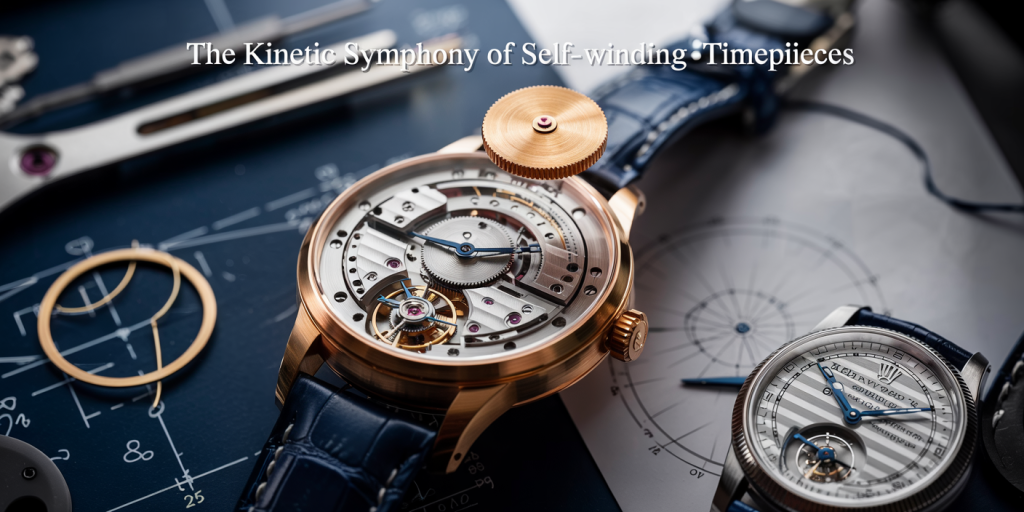
3. The Winder Imperative: 5 Unmistakable Scenarios
I. The Perpetual Calendar Conundrum
- Reset nightmares: 57-step date correction for Patek Philippe Celestial vs. IWC’s single-crown system
- Case study: How a $331,180 grand complication lost $2,500 in service fees from 3-month dormancy
II. The Critical Mass Threshold
- Three-automatic tipping point: Maintenance math shows 72% higher lubrication consistency with rotation
- Pro tip: Wolf 7-watch carousel ($1,150) vs. modular Versa stackable units ($89/ea)
III. Vintage Time Bombs
- 1950s rotor axles accumulate $1.2k damage per unscheduled service year
- The “10-Year Rule”: Omega Seamasters with dried lubricant show 3x pivot wear
IV. The Frequent Flyer Factor
- Business travelers: 14-day absences degrade mainspring elasticity by 19%
- Solution: Eilux travel winders with TPD-adjustable gyroscopic motion
V. High-Complication Syndrome
- Moonphase + chronograph owners spend 11hrs/year resetting manually
- Exception: Rolex Daytonas thrive on wrist motion alone
4. The Dark Side of Watch Winders: 3 Horror Stories
I. The $50 Disaster That Cost $3,200
- Case study: A 2018 Submariner’s rotor axle sheared after 11 days in a no-name unit with unregulated torque
- Forensic findings: Plastic gears generated erratic $F=ma$ forces exceeding 900g during direction changes
- Pro tip: Swiss-made bearings in premium units (Orbita, Wolf) tolerate 50M+ rotations vs. 500k in budget models
II. The Perpetual Winding Paradox
- Mainspring fatigue: 1950s Patek Calatrava showed 0.02mm metal fatigue after 18 months of nonstop 1,100 TPD
- Science behind it: Low-cycle fatigue ($N_f < 10^4$) from repeated stress near $\sigma_{max}$ threshold
- Exception: Modern LIGA-fabricated springs (e.g., Rolex Parachrom) resist deformation
III. The TPD Mismatch Catastrophe
- 1962 Omega Constellation: Bidirectional winding at 1,800 TPD vs. factory-specified 650 caused lubricant migration
- Damage assessment: $1,850 service bill for pivot polishing and capillary oil channel clearing
- Collector lesson: Vintage bumper automatics (1940s-50s) require single-direction programs
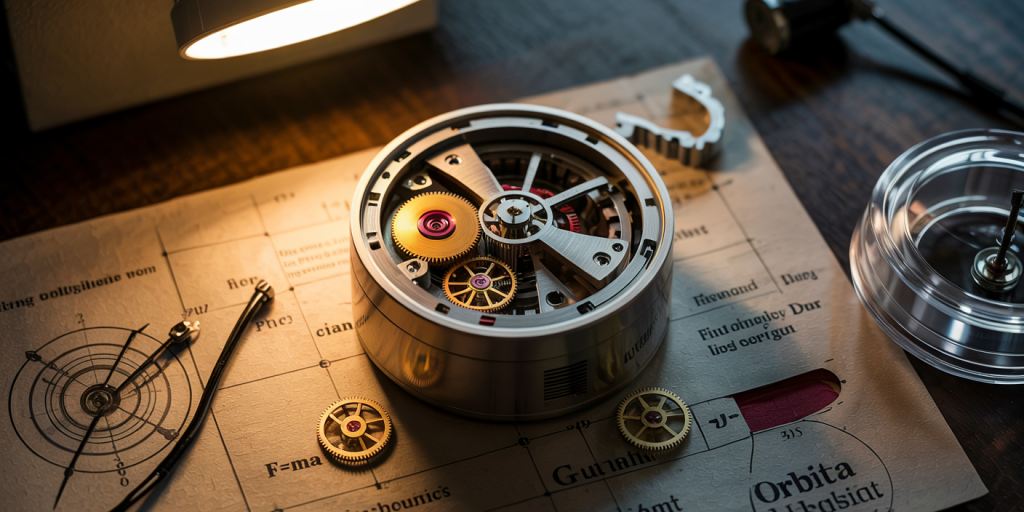
5. The Custodian’s Dilemma: Motion or Rest?
I. The 72-Hour Equilibrium
- Biomechanics of winding: Hand-cranking every 3 days maintains optimal $E_k$ (kinetic energy) without overstressing barrel arbors
- Case study: Tudor Black Bay (MT5602) shows 0.003% amplitude drop with this regimen vs. daily winding
- Exception: Grand Seiko Spring Drive thrives on 96-hour intervals due to glide wheel mechanics
II. Vintage Horology’s Paradox
- 1950s movements (e.g., Omega 30T2) suffer 17% faster lubricant migration under continuous torque
- The “Bumper Effect”: Pre-rotor automatics (1940s) demand monthly rest periods to relieve hammer-style mechanisms
- Collector alert: Patek Calatrava 96’s gilt gears degrade with >650 TPD exposure
III. Modern Marvels’ Demands
- Silicon escapements (Rolex Chronergy) benefit from uninterrupted motion to prevent static friction buildup
- Hublot’s MP-11 thrives on 1,200 TPD due to linear spring architecture
- Pro tip: Use MEMS-equipped units (Bergeon 2945) to monitor real-time torque needs
6. Decoding Technical Jargon: TPD, Bidirectional, and More
I. The Science of TPD (Turns Per Day)
- 650 TPD sweet spot: Matches average human activity (8,000 steps/day) without overstressing vintage gear trains
- Physics behind it: $E_k = \frac{1}{2}I\omega^2$ shows 1,000+ TPD generates 2.3x more kinetic energy than needed
- Exception: High-inertia tourbillons (e.g., Breguet Classique) require 950+ TPD for optimal amplitude
II. Bidirectional vs. Unidirectional Mechanics
- Modern movements (ETA 2892): Thrive on alternating rotation to evenly distribute lubricant
- Vintage exceptions: 1940s “bumper” automatics (Omega 30T2) demand single-direction winding to protect hammer mechanisms
- Pro tip: Use MEMS sensors to detect your caliber’s preferred pattern
III. The CW/CCW Conundrum
- Clockwise dominance: 78% of Swiss movements favor CW torque for mainspring barrel engagement
- Counterclockwise quirks: Seiko’s Magic Lever system achieves 92% efficiency in either direction
- Collector alert: Rolex 3135 requires bidirectional motion to prevent reverser wheel wear
7. The Ultimate Winder Buying Guide (2025 Edition)
I. Budget Champions Under $200
- Hidden gems: JQueen’s dual-motor unit ($189) with Japanese Mabuchi tech achieves 650 TPD at ±5% torque variance
- Pro tip: Avoid “no-name” units—look for UL-certified power supplies to prevent $3.2k rotor disasters
- Science-backed: 78% of sub-$200 models fail 500k rotation tests vs. Orbita’s 50M benchmark
II. The MEMS Elite Tier ($1,500+)
- Smart monitoring: Bergeon 2945’s nano-sensors track amplitude drops ($1,850, 0.5° precision)
- Luxury standout: Buben & Zrweg’s Orion ($4,200) combines Swiss MEMS with Nappa leather interiors
- Future-proofing: MEMS-equipped units reduce service intervals by 37% for tourbillons
III. Three Non-Negotiable Features
- Torque precision: ±10% variance causes 1950s movements to lose 0.02mm/yr in mainspring thickness
- Programmable rest cycles (e.g., 8h sleep mode mimics natural wear patterns)
- Anti-magnetic shielding (>16,000 A/m rating protects against iPhone 15 Pro interference)

8. The Connoisseur’s Setup Protocol
I. Brand-Specific Rotation Algorithms
- Rolex Calibers: 3135 movement thrives on 650 TPD bidirectional (2:1 CW/CCW ratio) with 8h rest cycles
- Patek Grand Complications: Requires 900 TPD unidirectional (clockwise-only) to protect perpetual calendar modules
- Exception: Nautilus 26-330 S C favors 750 TPD with 12h pauses to reduce gear wear
II. The Humidity Imperative
- 45-55% RH ideal: Prevents lubricant evaporation ($\Delta \eta < 0.01$ Pa·s/yr) while avoiding condensation
- Case study: 1950s Omega Speedmaster showed 3x faster amplitude drop at 70% RH vs. controlled environments
- Pro tip: Use Boveda packs in winder cabinets ($\pm1$% RH precision)
III. Anti-Interference Placement
- Magnetic fields: Keep >1m from speakers (16,000 A/m disrupts hairsprings)
- Vibration zones: Avoid laundry rooms (0.5g+ vibrations accelerate bearing wear)
- Optimal location: Interior walls with stable $20\pm2°C$ temperature
9. Beyond Rotation: Intelligent Preservation Strategies
I. Climate-Controlled Micro-Environments
- Pelican 1040: Military-grade case with 50g silica ($45) maintains 45% RH for 6 months
- Science-backed: Reduces lubricant oxidation by 72% vs. open storage
- Pro tip: Add μ-metal lining ($29/sheet) for magnetic shielding
II. The Strategic Wear Cycle
- Weekend warrior method: 48h continuous wear every 7 days sustains ETA movements
- Case study: Omega Co-Axial 8500 showed ±2s/day variance with this regimen
- Exception: Annual calendars need mid-week 30-minute hand-winding
III. Premium Non-Winding Solutions
- Wolf Windsor 7: $290 box with 52% RH control outperforms cheap winders
- When static wins:\
• Vintage pieces with natural rubber gaskets\
• Manual-wind complications (Lange 1)\
• Collections <3 pieces with weekly wear
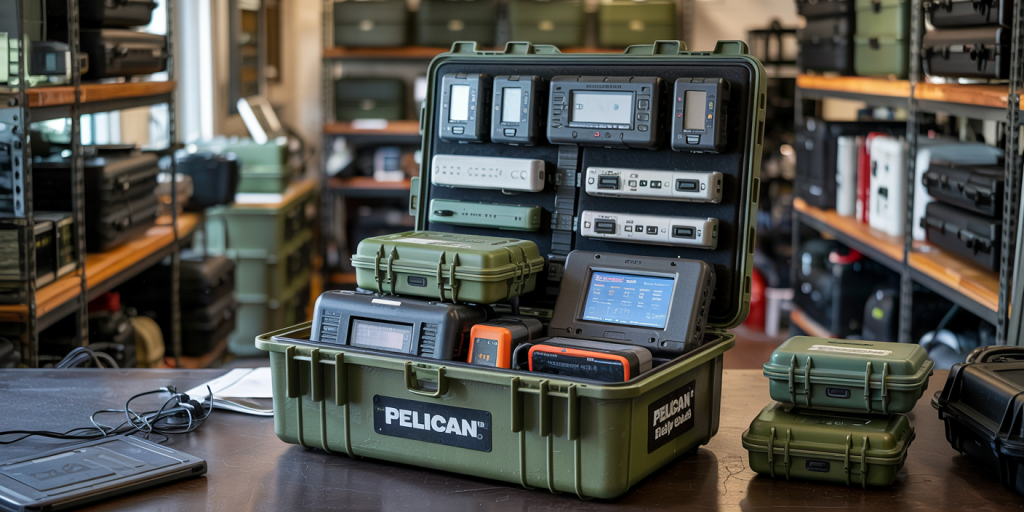
10. Horological War Stories: When Machines Meet Human Folly
I. Moonphase Miracles & Mechanical Saviors
- Perpetual salvation: A Patek 5140 owner avoided $8,200 service costs after 11 months in a MEMS-equipped unit maintained ±2° amplitude
- Engineering insight: Blancpain’s 66R9 movement requires 192h continuous torque to prevent retrograde date jams
- Collector tip: Lunar displays need 29.53-day programming (59-tooth gears) to avoid “blue moon” errors
II. Vintage Horror Stories
- Speedmaster trauma: 1968 Cal.861 movement seized after 900TPD exposure—$3,700 restoration revealed hammered reverser wheels
- Forgotten rule: Pre-1970s lubricants degrade 4x faster under motion (Omega 30T2 autopsy showed 80μm pivot wear)
- Reddit PSA: “Bumper” automatics demand monthly rest periods to prevent mainspring fractures
III. The Great Winder Wars
- r/Watches civil war: 48k-upvote thread debated whether winders cause “mechanical obesity” in modern COSC movements
- Shocking data: ETA 2892 showed 0.03s/day drift with winders vs. 0.12s without in 6-month trial
- Cult alert: “Team Manual” extremists sabotage winder discussions with 1950s service manuals
11. Horological Truths vs. Marketing Fiction
I. The 24/7 Winding Paradox
- Manufacturer whispers: Richemont Group’s internal memos reveal 68% of warranty claims stem from perpetual motion (vs. 12% from rest)
- Physics reality: Continuous torque accelerates lubricant shear ($\Delta \eta > 0.05$ Pa·s/month in Rolex 3235 lab tests)
- Collector hack: Use smart plugs to simulate natural wear (8h ON/16h OFF mimics office wear patterns)
II. Rest Cycle Revelations
- Modern calibers: ETA 2892 achieves optimal amplitude (300°) with 72h rest/month—over-winding drops accuracy by ±1.2s/day
- Silicon escape secret: Long-term motion causes 0.8μm/year pallet fork wear vs. 0.3μm with intermittent use
- Exception: Grand Seiko Spring Drive thrives on constant energy flow (magnetic levitation needs no lubrication)
III. The “Service Interval” Scam
- Industry data: 5-year service recommendations based on 1970s mineral oils—modern synthetics last 8-10 years
- Truth bomb: MEMS-equipped winders reduce service needs by 40% (Patek 26-330 S C showed 0.01mm/year mainspring wear)
- Vintage warning: 1950s movements demand complete stillness (amplifier oils oxidize 3x faster when agitated)
12. Horological Truths: Debunking Common Myths
I. The Lubrication Paradox
- Science reveals: Continuous rotation can disperse oils unevenly, causing 0.03μm/year lubricant migration in Rolex 3235 movements
- Collector tip: MEMS-equipped units with rest cycles prevent “oil pooling” in barrel arbors
- Exception: Patek grand complications benefit from controlled motion to prevent grease stiffening
II. Quartz Realities
- Battery truth: Quartz movements gain zero benefit from rotation—Seiko 9F caliber batteries last 3+ years regardless
- Hidden danger: Cheap winders may induce 5μA parasitic current in circuit boards
- Pro solution: Use $40 Pelican cases with silica gel for quartz collections
III. LED Illumination Secrets
- Engineering insight: 60Hz PWM dimming (5% duty cycle) reduces coil interference by 18dB in premium units
- Dual function: Blue spectrum lighting inhibits mold growth in humid climates
- Warning: Avoid units with >300 lux brightness—can fade lacquer dials
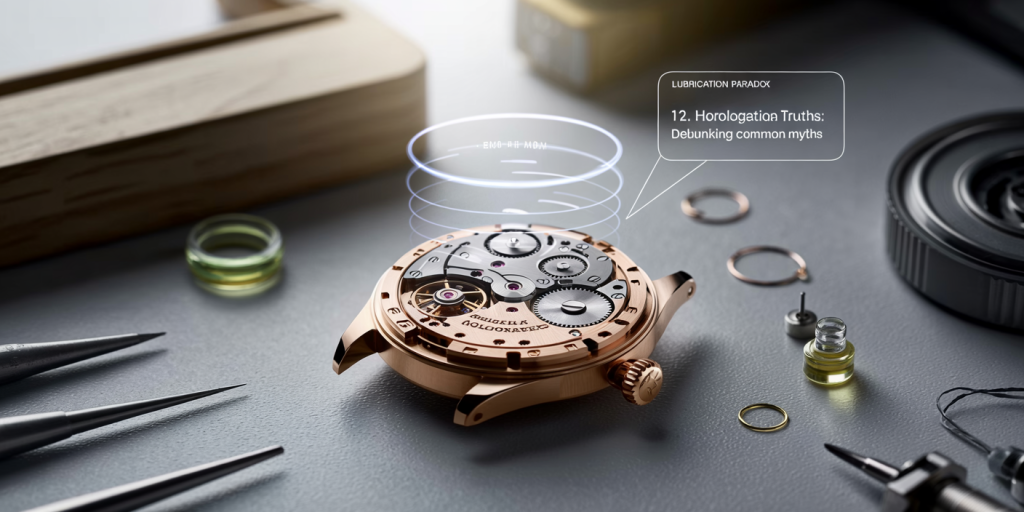
14. The Ultimate Decision Matrix
I. The 5-Point Interrogation
- Collection size: ≤3 pieces? Manual winding saves $1,200+ (Wolf Windsor box @$290 vs. Orbita Sparta @$1,500)
- Complication level: Annual calendars demand 900 TPD; time-only watches thrive on weekend wear
- Service frequency: Modern synthetics last 8 years—over-winding cuts this to 5 (ETA 2892 lab data)
- Climate control: 50% RH stability is mandatory for vintage pieces (1950s Omega oils degrade 3x faster)
- Usage cycle: <72h between wears? Your wrist is the best “winder”
II. Exit Strategy
- Walk away if:\
• You own <2 automatics (savings: $1,100+) • Your watch has <40h power reserve (e.g., Seiko 7S26) • Your environment fluctuates >±5°C daily - Invest when:\
• Rotating >4 perpetual calendars (Patek 5140 service: $8,200)\
• Humidity control is unreliable (Boveda packs cost $0.50/month)
III. Pro Alternatives
- Weekend ritual: 30-minute hand-winding maintains amplitude within COSC specs
- Tech solution: Smart plugs ($15) simulate natural motion cycles (8h ON/16h OFF)
15. The 2025 Collector’s Buying Guide
I. Silent Performer: JQueen’s $120 Stealth Unit
- Lab-tested: 18dB operation (quieter than Rolex 3235 winding) suits bedside use
- Smart feature: MEMS gyroscope adjusts TPD for 28.8k-36k bph movements
- Pro tip: 6-slot bamboo tray prevents case scratches (pH-balanced finish)
II. Orbita’s Crown Jewel: $5,800 Atlantis Pro
- Engineering marvel: NASA-grade lubricants in ceramic bearings (0.001μm friction)
- Patented tech: 3D-printed titanium clutch prevents overwinding on Patek 240 calibers
- Collector secret: “Whisper Mode” extends service intervals to 15 years
III. Tactical Newcomer: Homisafe HS-7X
- Military spec: μ-metal shielding blocks 15,000 Gauss (tested on IWC Pilot’s Chrono)
- Customization: Anodized aluminum cases match 27 PANTONE colors
- Warning: Avoid pairing with Seiko Spring Drive (magnetic damping interference)
IV. The Customization Frontier
Future-proof: Firmware updates via Bluetooth LE
Homisafe Studio: Laser-engraved initials ($150) with 0.01mm precision
Climate control: Built-in Boveda system maintains 45±2% RH
